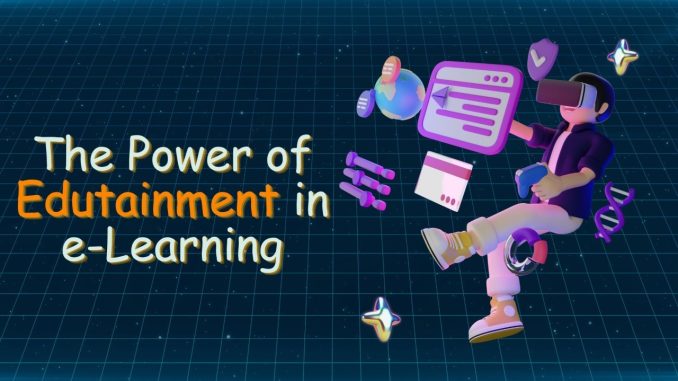
In a world saturated with digital content and competing for increasingly scarce attention spans, the traditional pedagogical models often struggle to engage learners effectively. From corporate training modules to K-12 classrooms, the challenge is no longer just about delivering information, but about making that information stick, resonate, and inspire action. This is precisely where the burgeoning concept of “edutainment” — the strategic fusion of education and entertainment — reveals its profound power. By leveraging engaging narratives, interactive elements, and compelling visuals, edutainment transforms passive consumption into active learning, making complex subjects accessible, memorable, and even enjoyable. For businesses looking to enhance employee training, for educators aiming to boost student engagement, or for content creators seeking to impact their audience, understanding and harnessing the principles of edutainment is becoming an indispensable competitive advantage.
The fundamental premise behind edutainment is rooted in neuroscientific insights into how the human brain processes and retains information. Emotions and engagement play a critical role in memory formation. When learning is coupled with positive emotional experiences – whether through humor, curiosity, challenge, or narrative immersion – information is more likely to be deeply encoded and easily recalled. Traditional didactic approaches, often relying on lectures and rote memorization, can fall short in this regard, leading to disinterest and shallow retention. Edutainment, conversely, taps into our innate desire for stories, games, and captivating experiences. Consider a complex historical event explained through an animated documentary that feels like an exciting adventure, or a challenging mathematical concept introduced via an interactive puzzle game. These approaches don’t just present facts; they create a context and an emotional hook that makes the learning journey intrinsically rewarding, making the acquisition of knowledge an active pursuit rather than a passive reception.
One of the most significant advantages of edutainment is its remarkable capacity to demystify complex subjects and lower the barrier to entry for learners. Topics that might traditionally be perceived as dry, difficult, or intimidating can become approachable and even fascinating when presented through an entertaining lens. For instance, channels like Kurzgesagt – In a Nutshell utilize stunning animation and compelling storytelling to explain quantum physics or the intricacies of the immune system to millions of viewers who might otherwise never delve into such topics. Similarly, in corporate training, a cybersecurity module delivered through an interactive escape room scenario, where employees must solve puzzles to prevent a simulated data breach, will yield far greater engagement and understanding than a lengthy PowerPoint presentation on protocols. By simplifying without oversimplifying, and by making the learning process less arduous, edutainment broadens the appeal of knowledge acquisition and empowers individuals to explore new intellectual territories.
Furthermore, edutainment fosters active participation and critical thinking. Unlike passive consumption of information, well-designed edutainment often requires learners to make choices, solve problems, or interact with the content in a meaningful way. Gamified learning platforms, for example, incorporate challenges, rewards, and progress tracking that motivate continuous engagement. A simulation that allows medical students to practice diagnostic skills in a virtual patient environment not only teaches procedures but also hones critical decision-making under pressure. This shift from passive reception to active problem-solving cultivates a deeper understanding and enhances the transferability of knowledge to real-world scenarios. It’s about learning by doing, even if the “doing” is within a simulated or narrative context.
The pervasive nature of digital media has also made edutainment incredibly scalable and accessible. Online platforms like YouTube, educational apps, and interactive e-learning modules can deliver high-quality, engaging content to millions of learners across diverse geographical locations and socio-economic backgrounds. This democratizes access to rich educational experiences that might otherwise be unavailable due to cost or logistical constraints. For businesses with distributed workforces, edutainment offers a highly efficient and effective means of delivering consistent training and upskilling programs globally, ensuring that all employees receive engaging content regardless of their location. This scalability is a powerful business advantage, enabling broad reach and uniform quality in learning initiatives.
However, the effective implementation of edutainment requires careful consideration. It is not merely about adding bells and whistles to educational content; the entertainment elements must be thoughtfully integrated to enhance, rather than detract from, the learning objectives. The “fun” should serve the “education,” not overshadow it. Poorly designed edutainment can lead to superficial engagement where learners are entertained but fail to grasp the core concepts. This necessitates a delicate balance and a deep understanding of both pedagogical principles and effective storytelling or game design. Collaboration between educators, subject matter experts, and creative content developers is therefore crucial to ensure both educational rigor and captivating delivery.
In conclusion, the power of edutainment lies in its ability to transform the learning experience from a chore into a captivating journey. By strategically fusing education with engaging entertainment, it harnesses human psychology to enhance memory, demystify complexity, foster active participation, and achieve unparalleled scalability. In an era where information overload is the norm and attention is the ultimate currency, edutainment stands as a testament to the fact that learning need not be a dry, arduous process. Instead, it can be an exhilarating exploration, demonstrating that when knowledge is presented with creativity and passion, it not only educates but also inspires, motivates, and ultimately empowers individuals to achieve more.